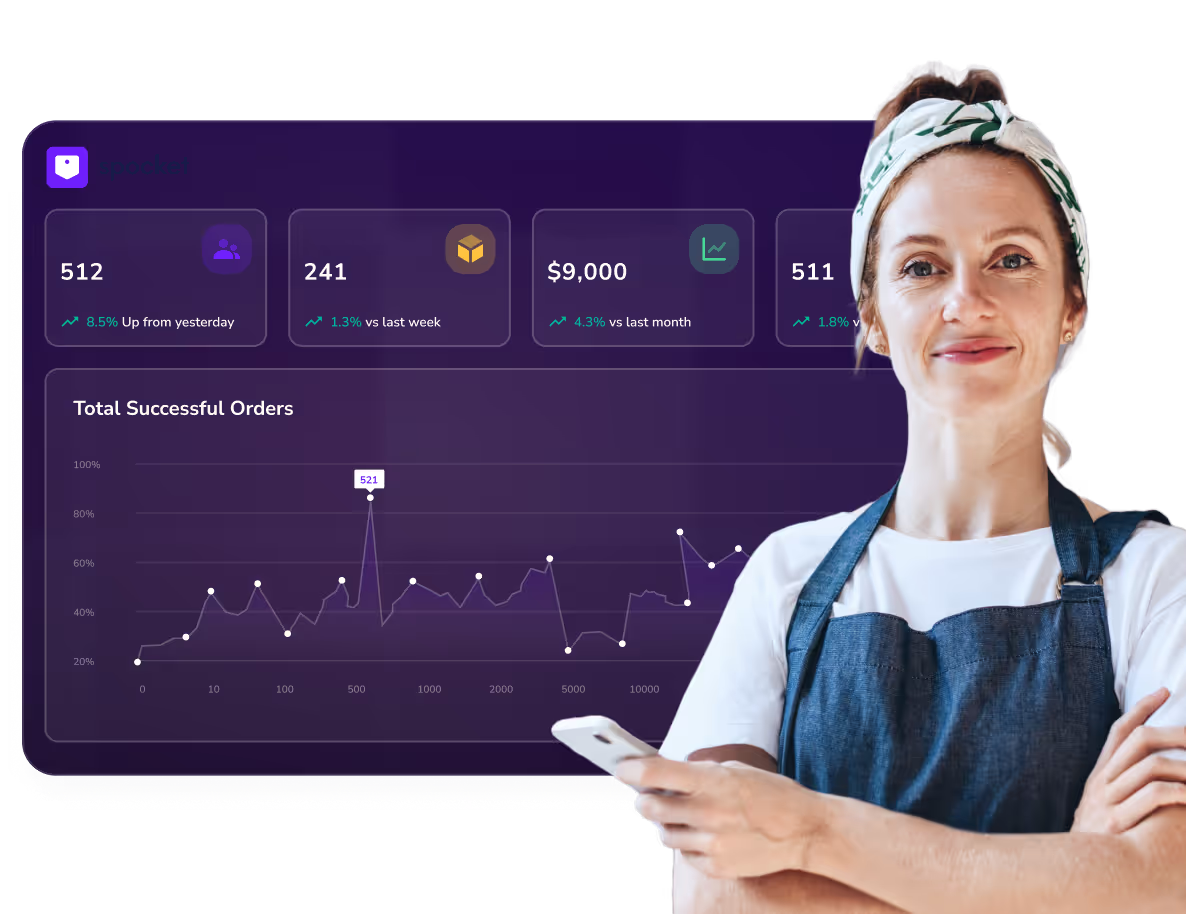E-commerce has come a long way since its early days. What started as a simple way to shop for books online has now blossomed into a multi-trillion-dollar global industry. With technological advancements, shifting consumer behaviors, and the rise of new platforms, the landscape of online retail is constantly changing. As we look ahead, 2026 promises to be a landmark year for e-commerce—one that will redefine how we shop, interact with brands, and experience products.
In this blog, we’ll take a deep dive into what’s on the horizon for the e-commerce industry. From the latest technological innovations like artificial intelligence and augmented reality to the evolving role of social commerce and sustainability, there’s a lot to be excited about. So, whether you’re a business owner, a shopper, or just curious about the future of online shopping, this guide will give you a glimpse of what 2026 has in store for e-commerce.
Current State of E-Commerce

Before we dive into the exciting future of e-commerce in 2026, it’s important to understand where we are right now. E-commerce has evolved from a niche market to a dominant force in retail, with online sales accounting for a significant portion of global trade. In 2023, the global e-commerce market was valued at approximately $5.8 trillion, with projections indicating a 39% growth over the next few years, expecting to surpass $8 trillion by 2027.
Market Size and Growth
The e-commerce industry is booming, and its growth shows no signs of slowing down. With more consumers turning to online shopping, the industry has expanded into nearly every sector, from fashion and electronics to groceries and home goods. In fact, more than 2.14 billion people are expected to shop online by 2026. This steady growth is fueled by the increasing accessibility of the internet, improved payment systems, and the rise of mobile commerce.
Consumer Behavior Trends
One of the most significant shifts in recent years has been the way consumers shop. People are no longer just buying products; they’re looking for experiences. Online shoppers now demand personalization, convenience, and seamless interactions with brands. A recent survey found that 80% of consumers are more likely to make a purchase if the shopping experience feels personalized to them. Additionally, consumers are increasingly making purchasing decisions based on factors like sustainability, ethical sourcing, and brand transparency.
Social media also plays a big role in shaping shopping habits. Platforms like Instagram and TikTok have become essential tools for businesses to connect with consumers, allowing users to shop directly through social channels. This convergence of social and shopping is paving the way for social commerce, which is expected to skyrocket in the next few years.
Emerging Technologies Shaping E-Commerce
As we look toward 2026, several emerging technologies are set to transform the e-commerce industry. From artificial intelligence (AI) to augmented reality (AR), these innovations will not only enhance the shopping experience but also create new opportunities for businesses to engage with consumers. Let’s dive into some of the most exciting technological advancements on the horizon.
Artificial Intelligence (AI) and Machine Learning
AI is already making waves in e-commerce, and by 2026, it will be an even more integral part of the shopping experience. AI is used in various ways, such as personalizing product recommendations based on browsing and purchasing behavior, chatbots for customer service, and even inventory management. Machine learning algorithms will help predict trends and consumer preferences, allowing businesses to optimize their offerings in real time. In fact, AI could even drive automated shopping experiences, where virtual assistants or bots help customers through their buying journey, making suggestions and guiding them toward the perfect product.
Augmented Reality (AR) and Virtual Reality (VR)
Imagine shopping for furniture and being able to virtually place a sofa in your living room before purchasing. Or trying on clothes without stepping into a fitting room. Augmented Reality (AR) and Virtual Reality (VR) are set to revolutionize the way consumers interact with products online. AR allows shoppers to “try” products in their own space via their smartphone or computer, while VR can immerse them in a fully virtual shopping environment. These technologies create an interactive and personalized shopping experience, making online shopping feel much more like in-store shopping.
AR and VR are expected to become even more widespread by 2026, with retailers integrating these tools to enhance their online stores and create engaging, memorable shopping experiences for customers.
Voice Commerce
With the rise of smart speakers and voice assistants like Alexa, Siri, and Google Assistant, voice commerce is poised to become a key player in the future of e-commerce. By 2026, voice-enabled shopping will be commonplace, allowing consumers to place orders, ask questions, and receive personalized recommendations without lifting a finger. Imagine ordering groceries or a new pair of shoes simply by speaking to your voice assistant. For businesses, voice commerce offers a unique opportunity to tap into a new, hands-free shopping experience, making it easier for consumers to shop on-the-go.
Key E-Commerce Trends for 2026

As we approach 2026, the e-commerce landscape is evolving rapidly, with several key trends that businesses and consumers alike will experience. These trends are not just about new technologies but also reflect changing consumer preferences and behaviors. Let’s take a look at the most significant trends shaping the future of e-commerce.
1. Personalization at Scale
In 2026, personalization will be taken to new heights. Customers now expect brands to offer tailored experiences, whether it’s product recommendations, marketing messages, or even pricing. Using AI and data analytics, businesses will be able to personalize the shopping experience on a massive scale—offering everything from custom product suggestions to personalized discounts. The more a brand can make its customers feel understood and valued, the more likely they are to convert into loyal buyers. By 2026, we’ll see hyper-personalization become the norm, where every interaction is designed to meet the unique needs of the individual customer.
2. Social Commerce
Social media platforms are no longer just for connecting with friends—they’ve become powerful sales channels. By 2026, social commerce will continue to grow, with platforms like Instagram, Facebook, and TikTok evolving into full-fledged online shopping experiences. Consumers will be able to purchase products directly through these platforms without ever leaving the app. This trend is driven by younger generations who prefer to shop where they spend their time, making social commerce a key focus for brands. Marketers will also integrate shoppable posts, influencer partnerships, and live-stream shopping events to build deeper connections with customers and drive sales directly from social media.
3. Sustainability and Ethical Practices
As consumers become more conscious of their impact on the environment, sustainability will continue to be a driving force in e-commerce. By 2026, there will be a greater emphasis on eco-friendly packaging, carbon-neutral shipping, and ethical product sourcing. Companies that prioritize sustainability will build stronger relationships with their customers, as more and more people are looking to buy from businesses that align with their values. This includes sustainable fashion, zero-waste products, and transparency in the supply chain. Expect to see e-commerce platforms offering detailed information on a product’s environmental and ethical impact, helping customers make more informed choices.
4. Mobile Commerce Dominance
We’re already seeing the rise of mobile shopping, but by 2026, it will be the dominant shopping method. Mobile-first experiences will be designed for easy navigation, faster checkout, and seamless payment options. With the integration of mobile wallets and one-click payments, consumers will have a more streamlined shopping experience on their smartphones than ever before. Mobile apps will be further optimized for personalized shopping experiences, and businesses will continue to develop mobile-friendly websites that allow customers to shop anytime, anywhere.
Challenges Facing E-Commerce in 2026
While the future of e-commerce is bright, there are key challenges businesses need to address to stay competitive and meet evolving consumer demands.
1. Data Security and Privacy Concerns
As e-commerce platforms handle more sensitive customer data, stronger security measures will be needed to prevent breaches and cyberattacks. Consumers are becoming more cautious about their privacy, and businesses must comply with regulations like GDPR and CCPA to maintain trust and protect customer data.
2. Supply Chain Optimization
E-commerce businesses will face ongoing challenges in managing supply chains efficiently. Global disruptions have highlighted vulnerabilities in logistics. Companies will need to adopt AI-powered tools to optimize inventory management and reduce shipping delays, while also focusing on sustainability and transparency to meet consumer demands.
3. Market Saturation and Increased Competition
With more businesses entering the e-commerce space, competition will intensify. E-commerce companies must differentiate themselves by offering unique value propositions, exceptional customer service, and loyalty-building strategies. This saturation makes it crucial to innovate and stand out in a crowded market.
4. Adapting to Changing Consumer Behavior
Consumer expectations are rapidly evolving, and businesses must adapt to stay relevant. Consumers demand personalized, seamless experiences across multiple channels. Additionally, increasing interest in sustainability and fast delivery means companies must innovate while balancing costs to maintain customer satisfaction and profitability.
Future Outlook and Predictions
As we look ahead to 2026, the e-commerce landscape is poised for exciting transformation. With rapid advancements in technology and shifting consumer preferences, businesses need to prepare for a drastically different online shopping experience. Here are some predictions and expert insights on where e-commerce is headed.
The Rise of Hyper-Personalization
By 2026, personalized shopping experiences will be the norm. Using AI and machine learning, brands will create hyper-targeted recommendations based on individual preferences, browsing history, and even mood. These tailored experiences will extend beyond product suggestions to include personalized pricing, exclusive deals, and customized marketing messages. Customers will expect retailers to know them, almost as well as a personal shopper does.
Seamless Omnichannel Shopping
In 2026, the lines between online and offline shopping will continue to blur. E-commerce businesses will adopt omnichannel strategies, allowing customers to shop seamlessly across different platforms, whether it’s a mobile app, social media, or in-store. The goal will be to provide a consistent and connected experience, regardless of how or where customers engage with a brand. This level of integration will require better synchronization between online stores, physical retail locations, and mobile shopping apps.
Voice and Visual Commerce Growth
By 2026, voice commerce and visual search will become increasingly important. Consumers will rely more on voice assistants like Alexa or Siri to make purchases, reorder items, or get product recommendations without lifting a finger. Visual search, where users can upload images to search for similar products, will also gain traction, especially in industries like fashion and home decor. These tools will make shopping more convenient and intuitive, driving further adoption of voice and visual commerce.
Sustainability as a Key Differentiator
Sustainability will continue to be a driving force in e-commerce. In 2026, customers will expect brands to operate with transparency, offering sustainable packaging, ethical sourcing, and carbon-neutral shipping options. E-commerce businesses that prioritize environmental and social responsibility will be better positioned to build lasting relationships with their customers. Sustainable products and green logistics will no longer be optional—they’ll be a necessity to meet both consumer demand and regulatory standards.
Conclusion
The future of e-commerce in 2026 is full of exciting possibilities, driven by technological advancements, shifting consumer expectations, and the increasing demand for personalized, sustainable shopping experiences. From the rise of AI-powered personalization to the integration of voice and visual commerce, businesses will need to adapt to stay ahead of the curve.
As we move closer to 2026, companies that focus on enhancing the customer experience, embracing new technologies, and adopting sustainable practices will thrive. E-commerce will continue to evolve, but one thing is clear—those who innovate and anticipate the needs of tomorrow’s shoppers will lead the way. It’s time for businesses to prepare for the future and capitalize on the trends that will define e-commerce in 2025.







































